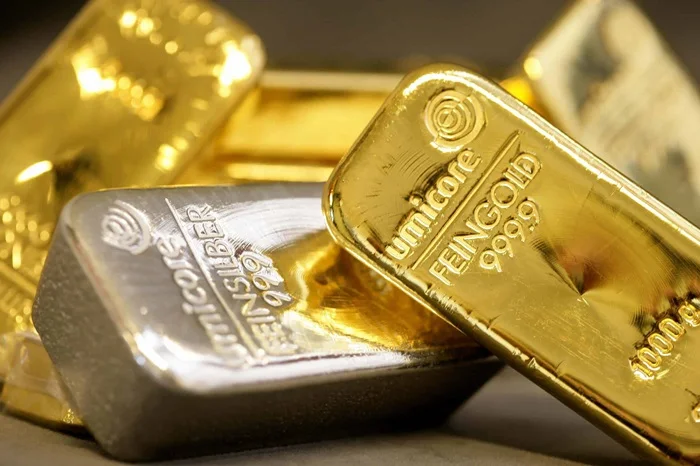Gold has always been a critical barometer of economic stability and global market trends. As a precious metal, it holds intrinsic value that serves as a safe haven in times of economic instability. The price of gold in 1930, however, was not just a reflection of its inherent value but also an indicator of the broader economic forces at play, particularly the onset of the Great Depression.
Economic Context Leading to 1930
The 1930s marked a turbulent period in world history, especially from a financial perspective. The year 1929 had seen the infamous stock market crash, which triggered the Great Depression—a decade-long global economic downturn. This period of financial instability greatly influenced the price of commodities, including gold.
In the lead-up to 1930, the world was on the gold standard, a monetary system where the value of a country’s currency was directly tied to a specific amount of gold. The price of gold was fixed at $20.67 per ounce, a rate that had remained largely unchanged for decades. This price was determined by the U.S. government and was meant to instill confidence in the value of the U.S. dollar.
The Fixed Price of Gold in 1930
Despite the financial chaos of the Great Depression, the price of gold in 1930 did not fluctuate wildly. The reason for this stability lies in the gold standard. Under this system, governments were obligated to exchange their currency for gold at a fixed rate. In the United States, the price of gold remained fixed at $20.67 per ounce, a rate established by the Gold Standard Act of 1900.
At the time, the U.S. government maintained a stockpile of gold reserves to back the dollar, ensuring that the price of gold remained stable. This fixed price was critical in preserving the value of the currency, even as stock markets and other financial assets plummeted in value.
Gold as a Safe Haven
During the early 1930s, as the global economy spiraled into depression, many people and institutions turned to gold as a safe store of value. Unlike stocks, bonds, or real estate, which saw dramatic losses in value during the Great Depression, gold’s price remained stable. As a result, gold became an attractive option for investors looking to preserve their wealth in uncertain times.
Gold’s role as a safe haven during this period is significant. Many people withdrew their money from banks and invested in gold, leading to a surge in the demand for gold coins and bars. The stability of gold prices provided a sense of security in a period marked by widespread financial panic.
See Also: The Price of Gold in 1920: A Historical Overview
Global Influence on Gold Prices
Although the official price of gold was fixed in the United States, the global demand for gold fluctuated. Countries around the world were facing economic hardships, and many nations abandoned the gold standard in the early 1930s. Britain, for example, left the gold standard in 1931, leading to a devaluation of its currency and increasing the demand for gold as an international reserve asset.
The abandonment of the gold standard by several countries contributed to changes in the global gold market. While the price of gold remained fixed in the United States, its value in terms of foreign currencies increased as those currencies depreciated. This divergence created opportunities for arbitrage, as investors sought to profit from the differences in gold prices across different markets.
The Role of Central Banks and Governments
During the 1930s, central banks and governments played a crucial role in shaping the gold market. Governments, particularly in the United States, were concerned about maintaining their gold reserves to back their currencies. In response to the economic turmoil, many governments implemented policies to restrict the export of gold, ensuring that their reserves remained intact.
In the United States, President Franklin D. Roosevelt would later take dramatic action to control the gold market. In 1933, just a few years after 1930, Roosevelt signed Executive Order 6102, which required U.S. citizens to surrender their gold to the government. This move was part of a broader effort to stabilize the economy and increase the money supply. The government later raised the official price of gold to $35 per ounce in 1934 as part of the Gold Reserve Act, effectively devaluing the U.S. dollar and increasing the value of gold in terms of the currency.
Conclusion
In 1930, the price of gold remained fixed at $20.67 per ounce, a rate established by the gold standard. Despite the financial chaos of the Great Depression, gold’s price remained stable, providing a safe haven for investors seeking to preserve their wealth. The fixed price of gold was a reflection of the monetary policies of the time, as governments sought to maintain the value of their currencies by backing them with gold reserves.
Gold’s role as a stable store of value during periods of economic uncertainty was reinforced during the early years of the Great Depression. As the global economy evolved and countries abandoned the gold standard, the importance of gold as a monetary asset became even more pronounced.
The events of the 1930s, including the price of gold in 1930, underscore the enduring value of gold as both a financial asset and a symbol of economic stability. Today, gold continues to serve as a hedge against economic uncertainty, just as it did nearly a century ago.
You Might Be Interested In
- The Golden Value: Unraveling the Price of Gold in 1860
- The Price of Gold in 1880: A Historical Analysis
- The Price of Gold in 1850: A Glimpse Into History’s Golden Era


